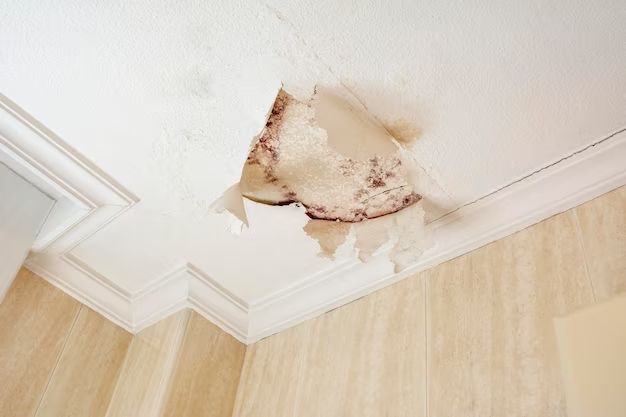Water damage to wood can often be repaired if the damage is not too extensive. The key factors in determining if water-damaged wood can be salvaged are how long it was exposed to moisture, the type of wood, and how deep the water penetrated into the wood.
Page Contents
Assessing the Damage
When wood gets wet, moisture seeps into the pores and fibers of the wood. If the exposure to moisture was brief, the water may not have penetrated very deeply into the wood. In these cases, the wood can often be repaired with simple cleaning and drying out.
However, if the wood was soaked for a prolonged period, moisture may have penetrated deeper into the wood structure. This can cause swelling, warping, discoloration, mold growth, and structural damage. The longer the exposure, the more extensive the damage is likely to be.
Certain types of wood are also more prone to water damage than others. Solid wood holds up better than engineered wood products like plywood or particleboard. Softwoods like pine tend to show damage sooner than hardwoods like oak or mahogany.
Drying Out the Wood
The first step in repairing water-damaged wood is to thoroughly dry it out. Leaving any residual moisture in the wood will lead to rot, mold growth, and further structural deterioration.
Use fans and dehumidifiers to actively draw moisture out of the wood. Open windows to allow fresh air circulation. Remove any wet insulation or debris touching the wood. The drying process may take weeks or months depending on the extent of the water exposure.
It is especially important to dry wood slowly to prevent further cracking and splitting. Quick drying could worsen any existing damage.
Cleaning and Repairs
Once fully dried, clean the wood thoroughly to remove any mold, mildew, or water stains. Mold remediation products can treat more extensive mold issues.
Gently sand down any rough or uneven surfaces. Use wood filler to patch small holes and dents. For more significant cracks and gaps, cut out the damaged sections and glue in wood splines or dowels to reinforce the repair.
Refinish and reseal the cleaned wood with new stain, paint, or clear coat to protect it from future moisture damage.
Replacing Damaged Wood
If the water exposure was prolonged or the wood has significant rot or structural damage, replacement may be necessary. Some signs that wood may be too far gone to salvage include:
- Dark black or green mold growing throughout the wood
- Large cracks, warping, or delamination of plywood
- Sections of wood feel spongy or crumble when pressed
- Evidence of insect or termite infestation
For flooring, walls, furniture, or other objects made entirely of wood, full replacement may be required if the damage is widespread. If the piece contains both damaged and undamaged wood, just replace the sections that cannot be repaired.
Prevention
To avoid water damage to wood structures and objects in the future:
- Keep wood away from standing water. Fix any plumbing leaks promptly.
- Maintain proper drainage around foundations to prevent flooding.
- Seal outdoor wood structures like decks with water-repellent finishes.
- Protect indoor wood with rugs and doormats to prevent tracked-in moisture.
- Maintain relative indoor humidity between 30-50% to limit wood movement.
Conclusion
Water-damaged wood can often be restored with prompt drying, cleaning, and repairs. However, significant damage may require replacing sections or the entire wooden object. To limit damage, keep wood away from moisture and properly seal outdoor structures against the elements. With proper care, even wood that has been water-damaged can frequently be repaired and returned to function.
